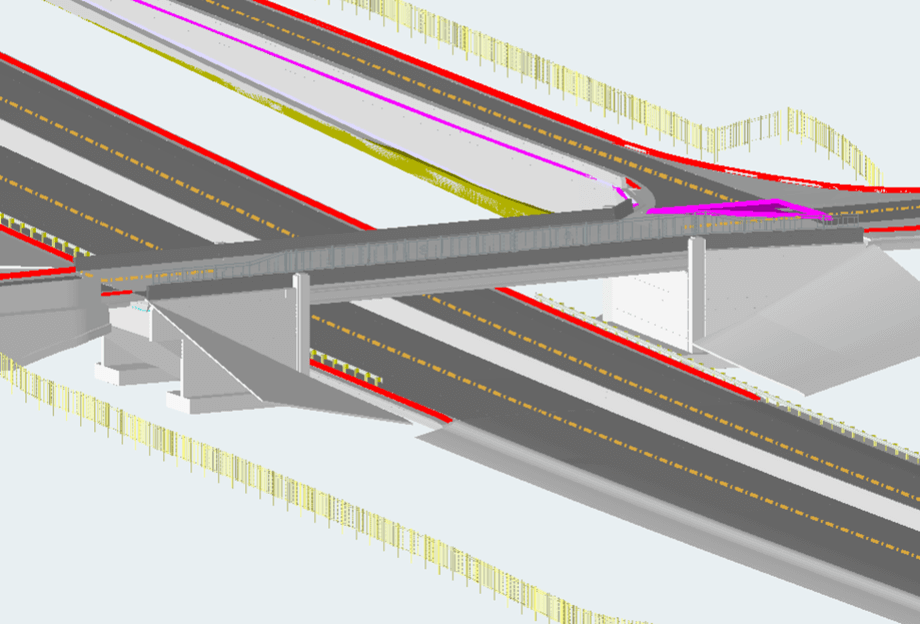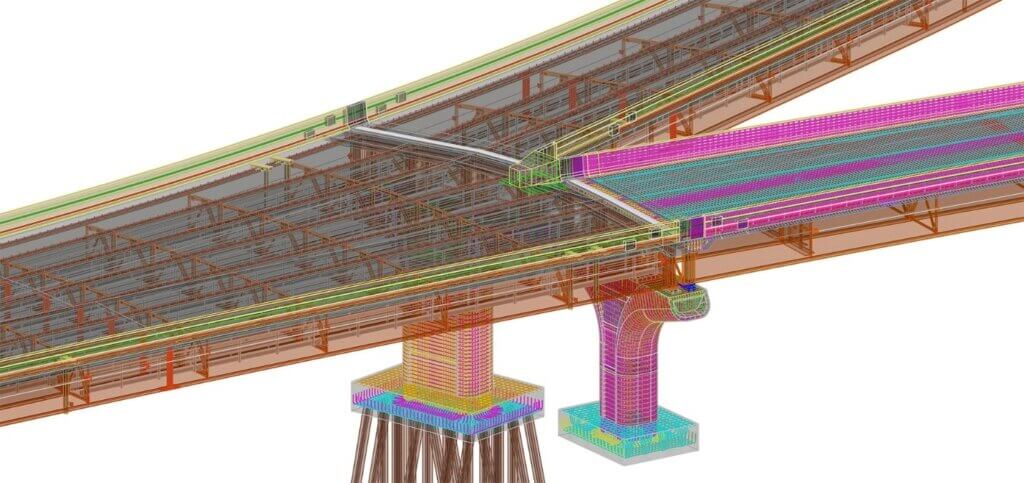News
Digital Delivery Methods in Transportation
Transportation departments across the nation are actively pursuing the implementation of digital delivery methods for their construction projects. This innovative approach aims to provide users with the ability to visualize plans through an accurate, three-dimensional model, eliminating the need to reference traditional two-dimensional paper plans in pdf format. The utilization of 3D models presents a distinct advantage over 2D PDF plans, offering a more comprehensive and intuitive perspective of the civil construction plans.
These models empower users to gain a better understanding of potential conflicts, grasp constructability concerns, and access a centralized repository of information. In essence, the 3D models will be hosted on a cloud-based plan set. The cloud-based nature of the plans enhances communication within the contract administration team, enabling team members to annotate, incorporate photos, videos, documents, or hyperlinks directly onto layers of the plans. These comments are then accessible to other team members in real-time from a singular source, eliminating the need for multiple copies of PDF plans.

Enhanced communication among designers, contractors, and contract administration staff is achievable through this system. In instances where design modifications or field adjustments are required during construction, the team can efficiently implement and deploy these changes. This eliminates the need for frequent updates to plan sets; instead, updates are seamlessly integrated into the digital plan that serves as a common reference point for everyone once released. When revisions are applied to a plan set, their impact becomes more readily apparent, thanks to the ability to view them in a three-dimensional setting. The 3D model simplifies the challenge of altering numerous plan sheets to reflect a single change, reducing the risk of overlooking certain sheets during a given revision.
Practically speaking, technology in the construction industry finds diverse applications, with as-built drawings serving as a noteworthy example. Contractors can systematically gather the data required for creating as-built drawings during the construction phase. Crucially, these drawings offer an accurate representation of the completed work, as they are generated in real-time during the construction process rather than being derived from data collected near the project’s completion.
Technology also has the capability to enhance the efficiency and accuracy of contract administration tasks in construction projects. An inspection team, for instance, can gather data—such as materials test results, punch list documentation, or quantity documentation—and link this information to specific layers in the project models. Other team members can subsequently review the various layers in the model to confirm their status in real time. This streamlined approach facilitates better coordination, documentation, and verification among team members during the contract administration process.

Challenges
The transition to technology in the construction industry won’t be without its hurdles. Companies are required to make a financial commitment to integrate new technologies into the construction landscape. Staff members must undergo training to adeptly use new technology and software programs, and the acquisition of hardware capable of running these programs becomes necessary. Additionally, existing technology must be made compatible with the new computing programs, adding another layer of challenges to the implementation process.
Beyond the financial challenges associated with introducing new technology to our construction projects, persuading project personnel of its advantages poses a significant industry hurdle. Individuals tend to adhere to familiar processes and workflows that they know to be effective. In a way, the shift toward technology can be perceived as asking them to address a problem that isn’t broken and may lack their trust.
The construction industry is continuously implementing new technologies to enhance and improve the efficiencies to reduce costs and ensure project schedules are being met. New technologies offer numerous benefits and advantages but do not come without various challenges throughout the construction process and project.
